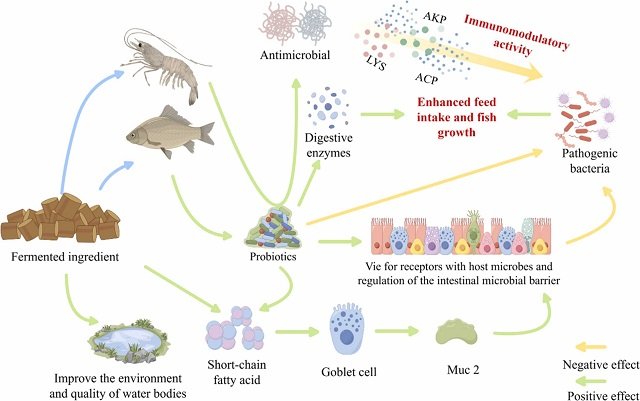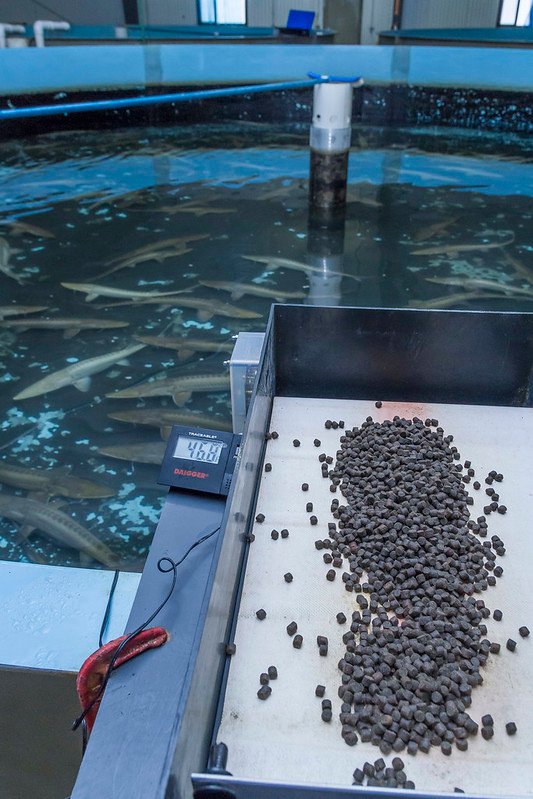
The aquaculture industry is booming, but it faces a challenge: fishmeal, a key ingredient in fish feed, is becoming expensive and unsustainable. Thus, researchers worldwide are searching for unconventional ingredients, including fruit by-products, that can reduce or replace fishmeal in aquaculture diets.
In this regard, researchers from the Phichit Freshwater Aquaculture Research and Development Center and Naresuan University sought to increase the utilization of banana peels (Musa sapientum). They investigated the potential of banana peels fermented with molasses (MFBP) as a protein source for feeding hybrid red tilapia (Oreochromis spp.) fry.
Banana peels: from waste to fish feed
Banana peels are a massive agricultural by-product, often discarded as waste. However, due to the abundance of phytochemicals, mainly polyphenols, carotenoids, flavonols, antioxidants, proteins, carbohydrates, vitamins, minerals, and other bioactive compounds, they are being used in animal feed.
One of the main challenges of using banana peels is the presence of anti-nutritional factors.
The power of fermentation
The key to unlocking the potential of banana peels lies in fermentation with molasses. This process offers a double benefit:
- Increased nutritional value: Fermentation increases the protein content of the peels, making them a more suitable ingredient for fish feed.
- Reduced antinutrients: Banana peels contain compounds that can harm fish. Fermentation helps break down these antinutritional factors (ANFs), making the peels safer for consumption.
Tilapia on a banana diet
This study investigated the use of banana peels fermented with molasses (MFBF) in feeding fish fry.
Researchers created fish feeds containing different levels of banana peels fermented with molasses (MFBP), replacing fishmeal. They then fed this to tilapia fry and monitored their growth and health for eight weeks.
Promising results for sustainable aquaculture
According to the researchers: “The nutritional value, crude protein (32.1%) of the MFBP meal was higher than that of unfermented banana peels (9.62% CP). In contrast, the crude lipids (6.03%), fiber (6.13%), ash (12.85%), and carbohydrates (42.89%) of the MFBP meal were lower than those of unfermented banana peels (crude lipids, 9.38%; fiber, 15.14; ash, 14.58%; carbohydrates, 51.28%).”
Stay Always Informed
Join our communities to instantly receive the most important news, reports, and analysis from the aquaculture industry.
Similarly, tilapia fed diets containing MFBP along with traditional fishmeal grew as well as those fed only with fishmeal.
The good news: tilapia-fed diets with up to 50% MFBP grew as well as those fed the control diet (containing only fishmeal). This suggests that MFBP can effectively replace a significant portion of fishmeal in tilapia feed without compromising growth.
Implications for tilapia aquaculture
This study is a promising step towards a more sustainable future for tilapia aquaculture. By using banana peels as an ingredient in fish feed, we can achieve:
- Reduced dependence on fishmeal: This can help conserve fish populations and make aquaculture more environmentally friendly.
- Waste reduction: By finding a valuable use for banana peels, we can minimize agricultural waste and promote a circular economy.
Conclusion
“The study demonstrated that the cultivation of red tilapia fry could be successfully carried out using banana peels fermented with molasses (MFBP) as an alternative protein source in the diet. MFBP could efficiently replace fishmeal up to 50% without affecting the growth and survival of this species under practical conditions,” concluded the researchers.
While further research is needed, this study paves the way for the use of MFBP in commercial tilapia farming.
Contact
Thuchapol Karaket
Fisheries Science Program, Department of Agricultural Science, Faculty of Agriculture Natural Resources and Environment
Naresuan University
Phitsanulok 65000,Thailand
Email: thuchapolk@nu.ac.th
Reference (open access)
Intharathat, B., Ponza, P., & Karaket, T. (2024). Feasibility of molasses-fermented banana peel as a protein source in practical diet for hybrid tilapia (Oreochromis spp.): effect on growth and feed efficiency. Acta Scientiarum. Animal Sciences, 46(1), e68154. https://doi.org/10.4025/actascianimsci.v46i1.68154
Editor at the digital magazine AquaHoy. He holds a degree in Aquaculture Biology from the National University of Santa (UNS) and a Master’s degree in Science and Innovation Management from the Polytechnic University of Valencia, with postgraduate diplomas in Business Innovation and Innovation Management. He possesses extensive experience in the aquaculture and fisheries sector, having led the Fisheries Innovation Unit of the National Program for Innovation in Fisheries and Aquaculture (PNIPA). He has served as a senior consultant in technology watch, an innovation project formulator and advisor, and a lecturer at UNS. He is a member of the Peruvian College of Biologists and was recognized by the World Aquaculture Society (WAS) in 2016 for his contribution to aquaculture.




